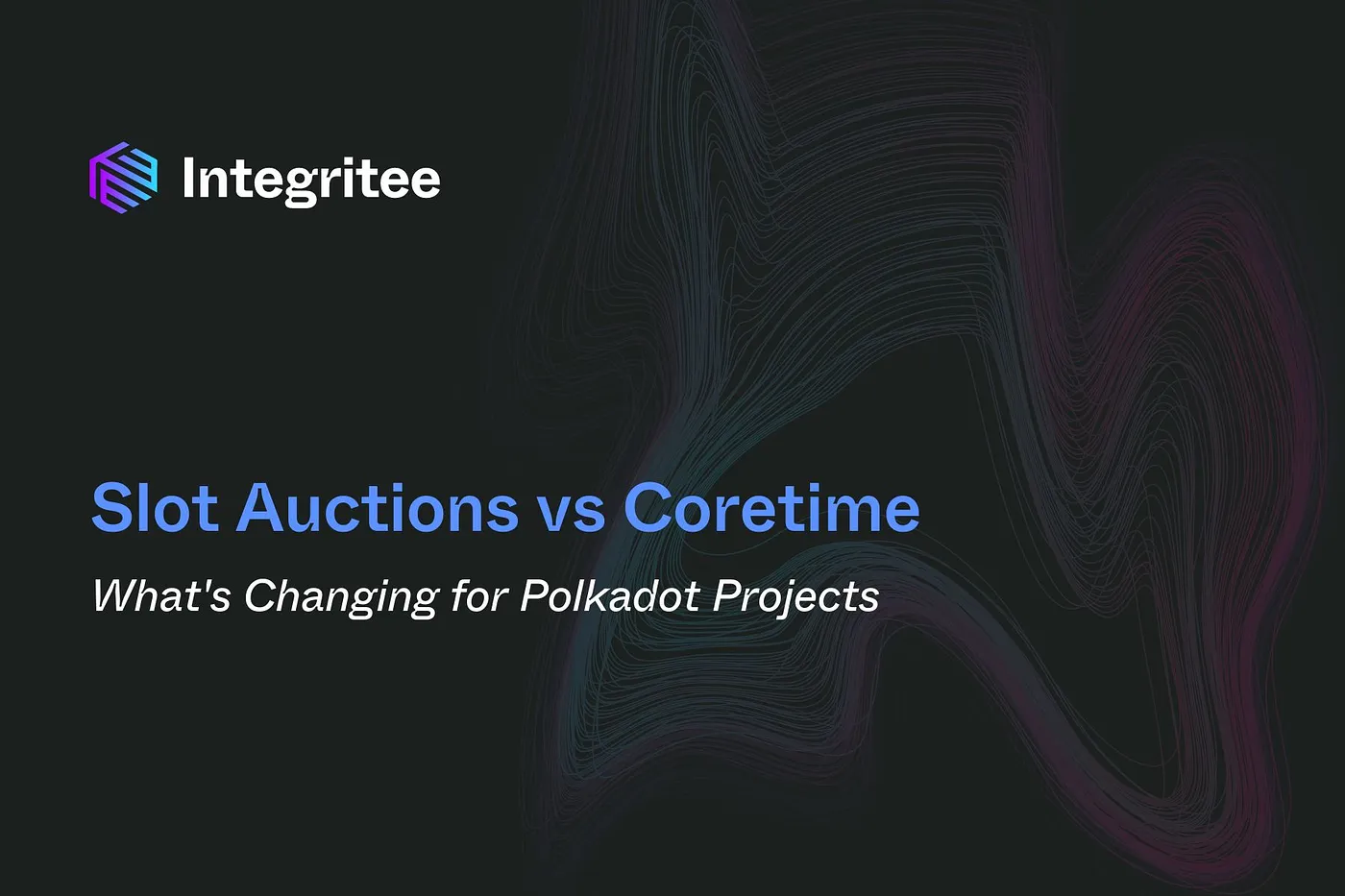Parachain slots were allocated on Polkadot via slot auctions, but those are going to be replaced with a new method: enter Coretime, Polkadot’s new parachain allocation system. In this article, we explore the concept and how it works.
Until now, Polkadot’s architecture can be broken down into the Relay Chain, parathreads, parachains, and the elements that connect these things. Each project on Polkadot “lived” in a parachain allocated via a slot auction.
To participate in these, projects usually created crowdloan campaigns, thus engaging the community (DOT holders) and fostering participation. Slot auctions will be a thing of the past pretty soon: projects will have to buy, rent out, or trade slots of time. The model shifts from slot leasing to core time procurement, as you would do on a co-working space.
Slot Auction vs Coretime: Main Differences
Initially and until quite recently, parachain allocation on Polkadot was done through slot auctions using a candle auction mechanism, which is a method where the deadline was determined by the time it took for a candle to burn out, and used to sell ships in the 16th century. It was the chosen method for the Polkadot slot auctions because it promotes safety. The winner was the project that bid the highest when the predetermined deadline reached the end.
However, the costs to win a parachain slot through a candle auction were very high, usually too high for smaller projects. Also, it made sense when Polkadot was founded, but now that it has evolved, a new structure is needed: On Decoded 2023, the founder of Parity Technologies, Gavin Wood, even said that “the slot auction model is certainly not agile”. Candle auctions were great to kickstart it and get projects involved in the ecosystem, but the paradigm is shifting and auctions don’t seem to fit in with the new vision.
Wood first mentioned Coretime — named so because it’s all about renting time on the core, not a specific space in the ecosystem. Polkadot is shifting its concept from being a blockchain structure made of chains to becoming a combination of spaces and applications designed in a long-term perspective: instead of having stationary projects living in a parachain for a certain period, the idea is to foster diversity and to allow different projects to develop different activities over different periods of time.
But what does this mean? Instead of only being offered the chance to build a house for three straight months, you can choose to work on it in parcels: fixing the sink now, stopping for a few months, and going back to paint the walls.
According to Wood’s talk on Decoded 2023, “[Cores] don’t need to be used to secure parachains (…) they’re very general and in principle, they don’t work in terms of fixed jobs (…) they can change what job they’re going just as easily as a CPU in a modern machine”. Coretime will basically work as a marketplace, allowing less capitalized markets to enter the race, and enhancing liquidity.
Coretime features:
- It’s an asset rather than just a fixed “address” on Polkadot — Coretime doesn’t have to be directly assigned. It can be rented out and moved through chains.
- Coretime buyers or renters can still use them as they did with auctions, but they can also share it with other projects, or resell it.
- Higher transaction bandwidth
- Beneficial for pay-as-you-go, periodic, and low-latency parachains
Benefits of Coretime:
- Minimizes the barriers to entry (especially for companies with less capital)
- It optimizes the way resources are allocated depending on each project’s needs. Each company can buy Coretime to fit their workload, size, capital, etc.
- It improves Polkadot and Kusama’s capability and allows for more diversity as it’s now open to more than just 100 projects.
How does it work?
Replacing auctions with Coretime doesn’t necessarily eliminate the need for crowdloans, as projects still have to need money to rent out a core. According to this thread, crowdloans are still a possibility, but a model is yet to be defined, and it’s still unclear how the community will be able to participate. In this talk, Parity’s Software Engineer, Dónal Murray, dives a bit deeper into the technical side of Coretime.
But how will it work? There will be marketplaces to purchase Coretime, for example, Lastic and Region X. On Kusama, the core time model will already be enacted on the 18th of April and available to projects to purchase core time via the mentioned marketplaces. The rollout of Polkadot core time might happen in the next 3 months following Kusama’s.
If you want a deep dive into all aspects of core time, check out the FAQ section here.
• • •
About Integritee
Integritee is the most scalable, privacy-enabling network with a Parachain on Kusama and Polkadot. Our SDK solution combines the security and trust of Polkadot, the scalability of second-layer Sidechains, and the confidentiality of Trusted Execution Environments (TEE), special-purpose hardware based on Intel Software Guard Extensions (SGX) technology inside which computations run securely, confidentially, and verifiably.
Community & Social Media:
Join Integritee on Discord | Telegram | Twitter | Medium | Youtube | LinkedIn | Website
Products:
L2 Sidechains | Trusted Off-chain Workers | Teeracle | Attesteer | Securitee | Incognitee
Integritee Network:
Governance | Explorer | Mainnet | Github
